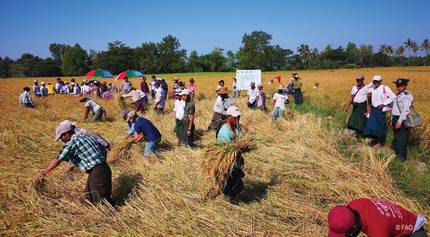Leveraging innovation and technologies to accelerate the achievement of food security and nutrition in Asia and the Pacific
Innovation in agriculture cuts across all dimensions of the production cycle and along the entire value chain - from crop, forestry, fishery or livestock production to the management of inputs to market access. FAO assists member countries in unlocking the potential of innovation to drive socio-economic growth, ensure food and nutrition security, alleviate poverty and improve resilience to climate change, thereby helping to achieve the Sustainable Development Goals. Because innovation is a complex process where governments and other key stakeholders play different roles, FAO focuses on a system-wide approach.
This brochure highlights some of the many and varied types of innovations that are making success steps towards the SDGs. Agriculture needs to be profitable for smallholders, and access to online and physical markets and the incorporation of good practices, standards and infrastructure are critical for regional and international trade. Innovation, therefore, is central to achieving this multidimensional change.
2020, 24 p.


